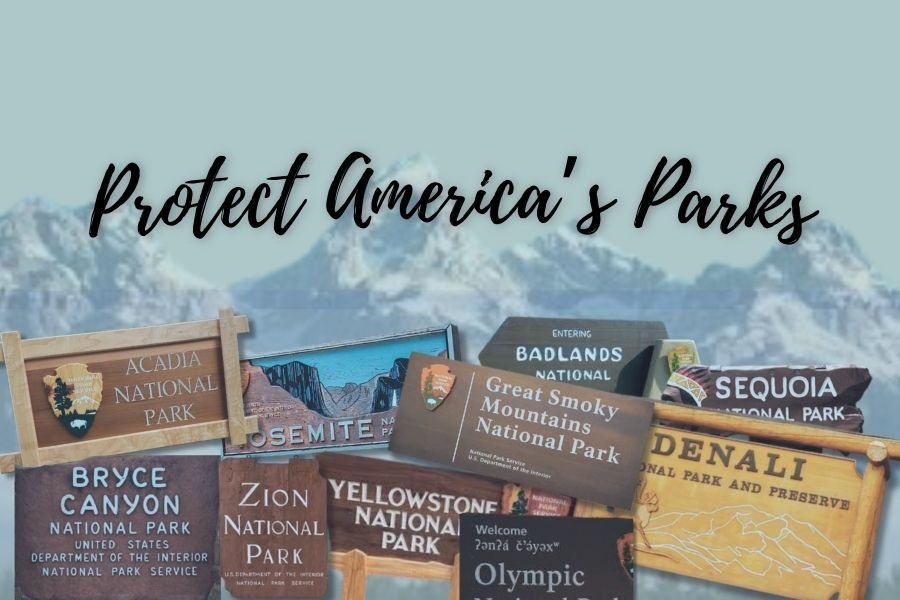America’s national parks are more than just tourist destinations. Since Yellowstone National Park became the nation’s first national park in 1872, these sacred spaces have been a symbol of America’s rich environmental heritage. These lands aren’t only what makes America beautiful, but are also vital for preserving biodiversity, providing precious natural resources, and offering inspiration for visitors in current and future generations. However, despite their great significance, national parks have faced a series of mounting threats in recent months under the Trump administration.
The Trump administration began their attack on national parks by delaying hiring of seasonal employees and freezing vacant permanent permissions, resulting in a shortage of crucial employees at national parks. Nearly 1,000 National Park Service (NPS) workers were fired in alignment with President Trump’s effort to downsize the federal workforce. While recent court orders have ensured that the NPS is authorized to reinstate these employees, the NPS will still be facing significant logistical and financial challenges, possibly leaving many parks understaffed as peak visitation season approaches. Moreover, the administration called for the cancellation of 34 Park Service building leases. Nine visitor centers and visitor contact stations are currently slated for lease cancellations.
Despite the NPS’ staffing numbers declining, the massive influx of tourists has not budged. In 2024 alone, the NPS reported a record 331.9 million visits. This is a major issue for park operations and visitor safety, as the decline in the workforce coupled with a large number of tourists could negatively impact the ability to manage crowds and maintain services. It is impossible to expect national parks to safely welcome millions of visitors without adequate staff and resources.
Parks have shown significant economic benefit in the past. A decade after Yellowstone was established as a park in 1872, it became endangered due to a lack of protection. The same thing happened to Yosemite, resulting in parks receiving federal protection. Hiring multiple workers to each park helped alleviate the Great Depression era by creating over 415,000 jobs.
In addition to national parks’ economic benefits, it’s impossible to forget how crucial they are for environmental conservation. They protect clean water, air, and diverse ecosystems. The fewer staff there are to maintain these spaces, the more we risk environmental decline. Additionally, the parks are home to over 600 species of endangered animals protected by the Endangered Species Act. With the removal of the very people enforcing the act, the animals are put on the brink of extinction from poachers. Previously endangered species like the Bald Eagle are only currently thriving due to the Endangered Species Act and the national parks protecting them, and could face consequences under the current policies.
People from all across the political spectrum hold cherished memories in family parks, whether that be family vacations, ventures for inspiration, or solo getaways. If we allow these lands to be neglected, we risk losing history, biodiversity, and the experience to view the natural world from an open perspective. We must keep these natural wonders available for future generations to visit and appreciate. Protecting these parks is not a choice — it’s a duty.








